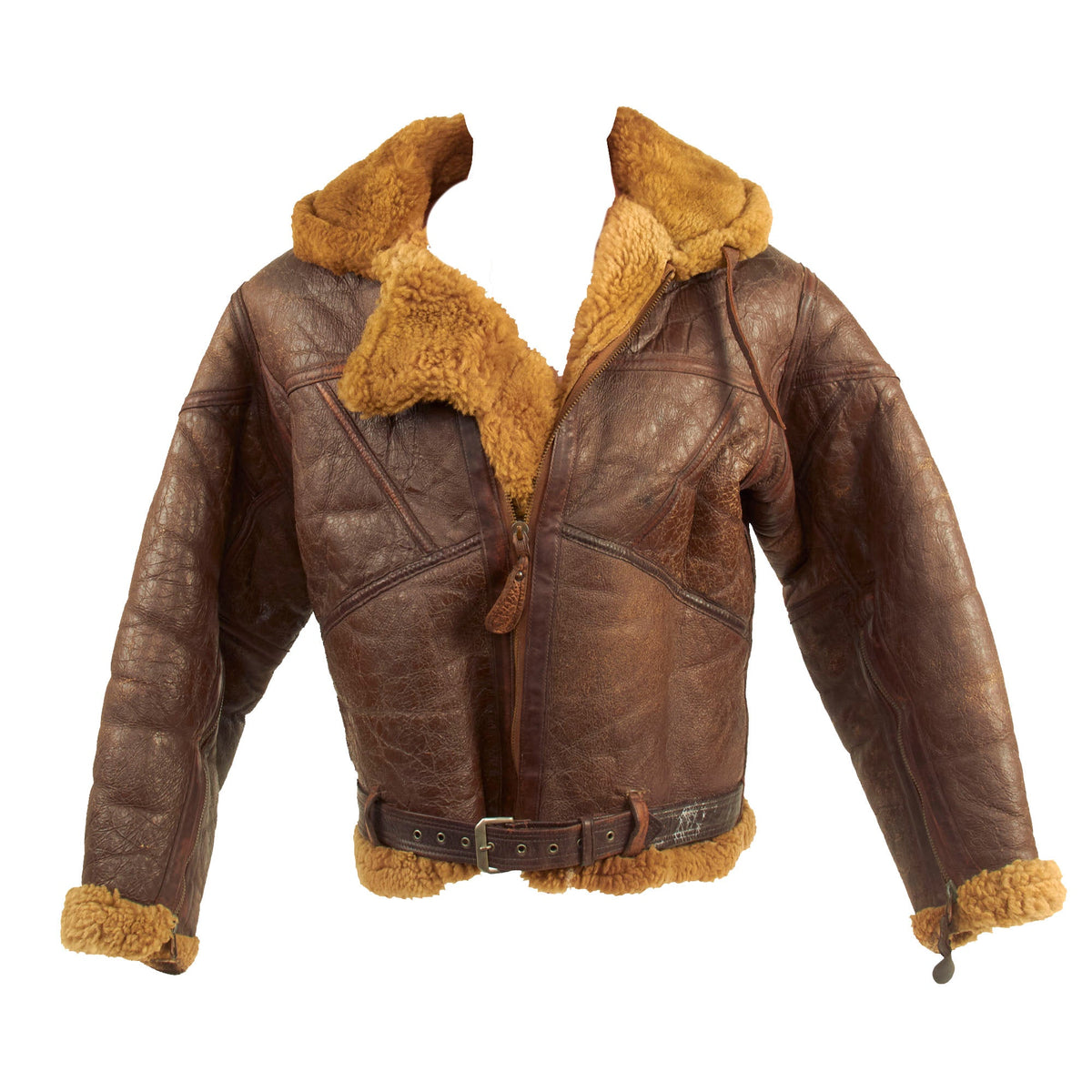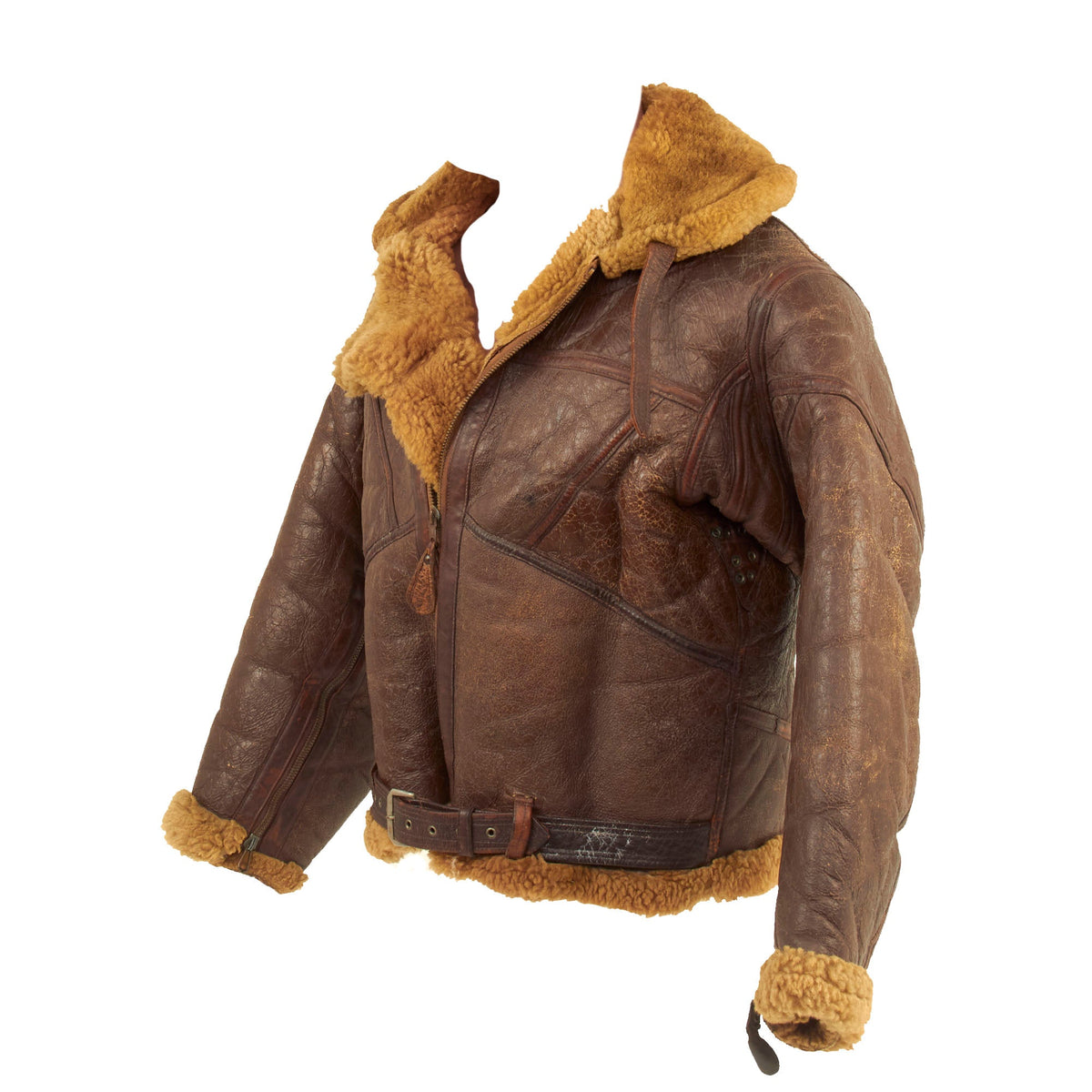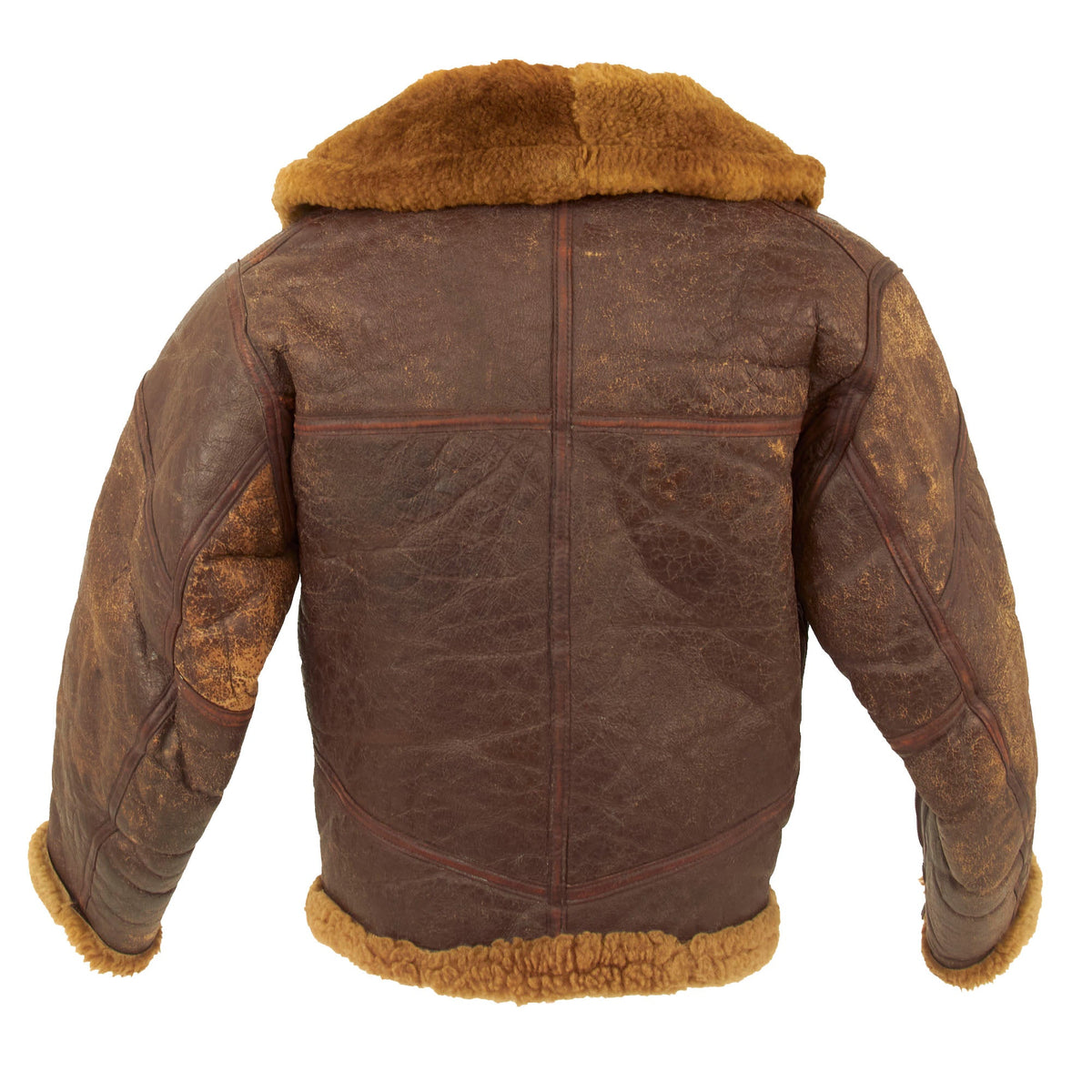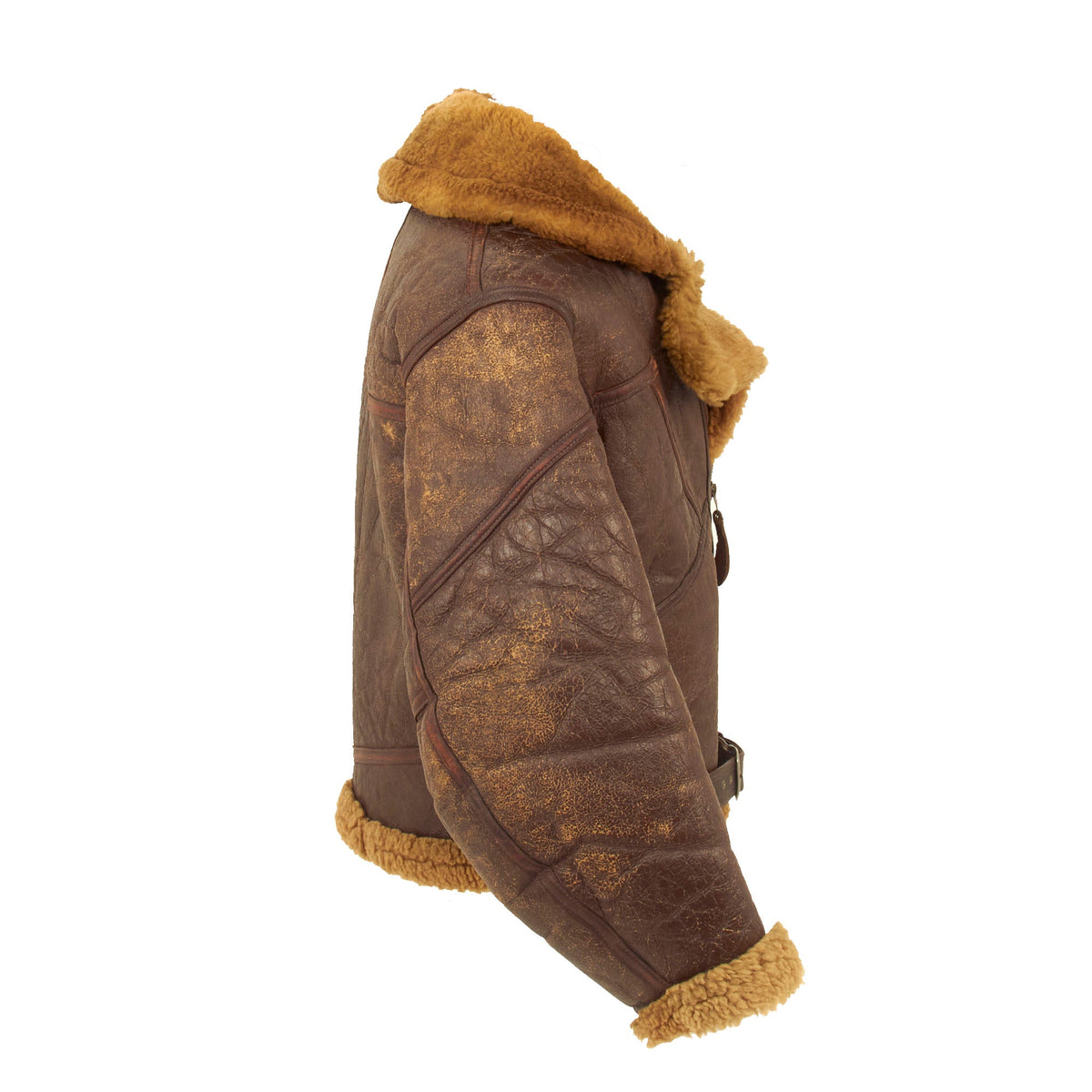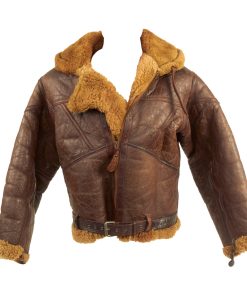Original British WWII Irvin Sheepskin Flying Jacket With Air Ministry “AM” Marked Zippers Original Items
$ 1.295,00 $ 323,75
Original Item: Only One Available. Now this is a lovely example of the dashing British Royal Air Force Irvin Sheepskin Flying Jacket. The jacket does show signs of use and wear but is otherwise in solid presentable condition. As aviation advanced so did the altitudes to which pilots could fly. Suddenly aircrew were flying to thousands of feet where temperatures would easily be sub-zero, not a good thing when aircraft construction still provided basic, un-insulated cockpits. This situation drove Irvin to create The Irvin Flying Jacket.
Irvin’s jacket was superb. Made from heavyweight sheepskin, its thick natural wool provided incredible insulation. While the sheepskin was considered heavyweight, the jacket itself was comparatively light and comfortable. Irvin insisted on the most supple sheepskin: in a cramped cockpit movement was already restricted and no pilot or crew would want to be constrained further still. The Irvin jacket was a masterpiece of design, maximum warmth and comfort combined with maximum mobility. The jackets had long sleeves zipped to enable gauntlets to be worn and these ones are marked with A.M. for the Air Ministry. The Air Ministry was a department of the Government of the United Kingdom with the responsibility of managing the affairs of the Royal Air Force that existed from 1918 to 1964.
The wide collar could be raised to provide excellent insulation around the neck and lower part of the head and face while a belt was fitted at the waist to ensure draughts couldn’t drop the pilot’s body temperature and reduce his level of alertness. The original jackets didn’t have pockets as these were not needed and or correctly not present on this example.
Irvin was producing his jackets at Letchworth and supplied the RAF during the Battle of Britain and through most of WWII. The jacket was so popular Irvin had to enlist the services of subcontractors in order to meet demand. The subcontractors are often held responsible for variations in the pattern of jackets made during the war. Many examples from the WWII production show variations on that, for example, an additional, small angled panel above each hip. But the point is “there was a war on”, almost everything was scarce, including supplies of high-quality sheepskin, so large panels would be made by patching together smaller off-cuts and can be clearly seen with this example.
The overall condition of this one is quite nice and very solid. There is the expected cracking in the leather but nothing that compromises the integrity of the jacket. All 3 zippers appear to be original and in functioning order. The waist belt has a possibility of being a period replacement and does not bear the “IRVIN” name on the silver buckle.
A wonderful example ready for further research and display.
Approx. Measurements:
Collar to shoulder: 10.5″
Shoulder to sleeve: 20.5”
Shoulder to shoulder: 18.5”
Chest width: 18.5″
Waist width: 18.5″
Hip width: 18.5″
Front length: 25.5″
Fast Shipping with Professional Packaging
Thanks to our longstanding association with UPS FedEx DHL, and other major international carriers, we are able to provide a range of shipping options. Our warehouse staff is expertly trained and will wrap your products according to our exact and precise specifications. Prior to shipping, your goods will be thoroughly examined and securely secured. We ship to thousands clients each day across multiple countries. This shows how we're dedicated to be the largest retailer on the internet. Warehouses and distribution centres can be located throughout Europe as well as the USA.
Note: Orders with more than one item will be assigned a processing date depending on the item.
Before shipping before shipping, we'll conduct a thorough inspection of the items you have ordered. Today, the majority of orders will be delivered within 48 hours. The delivery time will be between 3-7 days.
Returns
The stock is dynamic and we cannot completely manage it because multiple stakeholders are involved, including our factory and warehouse. So the actual stock may alter at any time. It's possible that you may not receive your order once the order has been made.
Our policy is valid for a period of 30 days. If you don't receive the product within 30 days, we are not able to issue a refund or an exchange.
You can only return an item if it is unused and in the same state as the day you received it. You must have the item in its original packaging.
Related products
Uncategorized
Uncategorized
Band of Brothers ORIGINAL GERMAN WWII Le. F.H. 18 10.5cm ARTILLERY PIECE Original Items
Uncategorized
Uncategorized
Uncategorized
Uncategorized
Uncategorized
Uncategorized
Uncategorized
Armoured Fighting Vehicles of the World: AFVs of World War One (Hardcover Book) New Made Items
Uncategorized
Uncategorized
Uncategorized
Uncategorized
Uncategorized
Uncategorized
Australian WWII Owen MK1 Machine Carbine SMG Custom Fabricated Replica with Sling Original Items
Uncategorized
Uncategorized
Uncategorized
Uncategorized
Uncategorized
